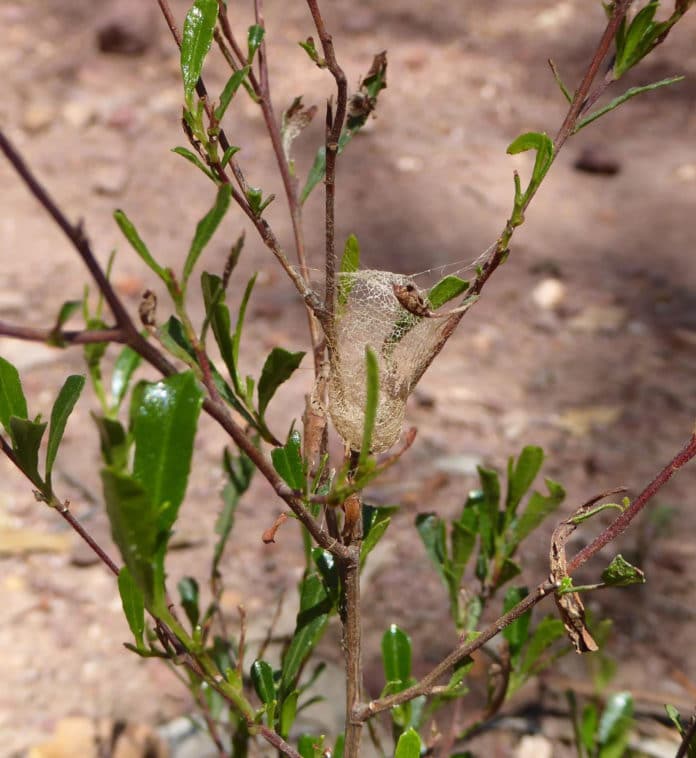All extant spiders produce silk, which may have been initially used to protect the spiders and their eggs. The Australian thomisid Saccodomus formivorus is a remarkable exception, constructing a basket-like web that facilitates its ant prey’s capture.
The spiders construct their webs on low-lying shrubs near either the nests or foraging trails of ants. The silk of the basket web of S. formivorus has properties that differ from those of other, conventional foraging webs. The silk must also support the remarkable feature of the basket-like design: high dimensional stability that allows a free-standing web structure.
The international scientists’ new study has provided the first insights into a new type of silk produced by the very unusual Australian basket-web spider. The silk produced by the Australian basket is uniquely rigid and so robust that the basket-web doesn’t need help from surrounding vegetation to maintain its structure.
Professor Mark Elgar from the School of BioSciences at the University of Melbourne said, “This silk retains its rigidity, allowing a rather beautiful silken basket or deadly ant trap.”
“Our discovery may provide insights into the evolution of foraging webs. It is widely thought that silk foraging webs, including the magnificent orb-webs, evolved from the habit of producing silk to protect egg cases. Perhaps the basket-web is an extension of the protective egg case and represents a rare contemporary example of an ancestral evolutionary process.”
Professor Thomas Scheibel from the University of Bayreuth said the silk rigidity appears to come from microfibres and submicron fibers’ synergistic arrangement.
Professor Scheibel, who headed the research from Germany, said, “Nature has created a complex structure that, at first glance, resembles industrially produced composites.”
“Further investigations have shown that they are chemically different components and their respective properties together result in the thread’s extreme elasticity and toughness, thus creating a high degree of robustness. With today’s composite materials, on the other hand, it is mainly the fibers embedded in the matrix that establish the particular properties required, such as high stability.”
“While more work needs to be done to understand the molecular details of the silk. There is potential interest in a new genetic material that can be produced in a scalable manner.”
“The interesting feature is the high lateral stiffness as well as the gluing substances, which could be useful in several types of applications, but it will be some time before this becomes a possibility.”
Professor Elgar said, “More generally the basket web, and the properties of its silk, highlight the importance of continuing to investigate obscure, unfamiliar species.”
“There is increasing recognition that solutions to many of the complex challenges and puzzles we face today can be found from biological systems.”
“This so-called ‘Bioinspiration’ draws on some 3.8 billion years of natural selection honing biological forms, processes, and systems. The potential insights from that diversity of life, about which we still know relatively little, is staggering.”
Journal Reference:
- Haynl, C., Vongsvivut, J., Mayer, K.R.H. et al. Free-standing spider silk webs of the thomisid Saccodomus formivorus are made of composites comprising micro- and submicron fibers. Sci Rep 10, 17624 (2020). DOI: 10.1038/s41598-020-74469-z
